Our Publications
A wealth of information awaits visitors to the National Archives of Singapore. Over the years, NAS has produced many notable publications and interactive resources which are useful resources to students, researchers and anyone interested in the history and heritage of the nation. These publications are anchored on our archives and are essential tools in sharing the collective memory of Singapore.
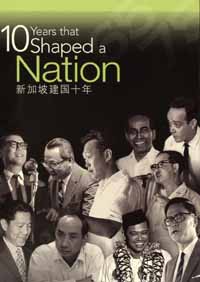
10 Years That Shaped A Nation
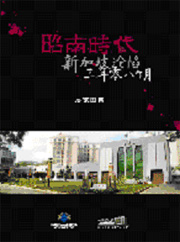
Exhibition Catalogue on Syonan Years: Singapore Under Japanese Rule 1942 - 1945 (Chinese Edition)
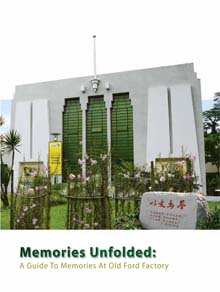
Memories Unfolded: A Guide to Memories at Old Ford Factory
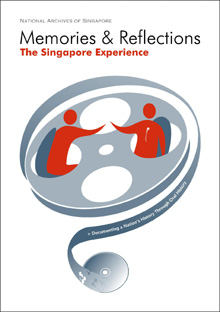
Memories & Reflections: Documenting a Nation's History through Oral History - The Singapore Experience
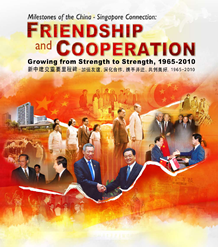
Milestones of the China-Singapore Connection: Friendship and Cooperation, Growing from Strength to Strength, 1965-2010 (新中建交重要里程碑—加强友谊、深化合作、携手并进、共创美好,1965-2010)
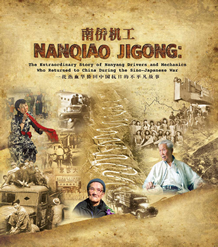
Nanqiao Jigong: The Extraordinary Story of Nanyang Drivers and Mechanics Who Returned to China During the Sino-Japanese War (南侨机工:一批热血华侨回中国抗日的不平凡故事)
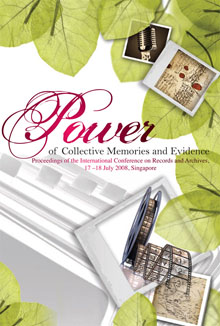
Power of Collective Memories and Evidence
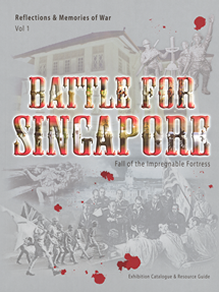
Reflections & Memories of War Volume 1: Battle for Singapore - Fall of the Impregnable Fortress
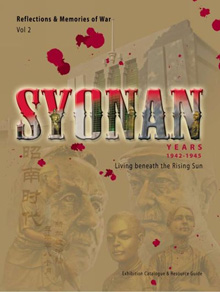
Reflections & Memories of War Volume 2: Syonan Years (1942 - 1945)
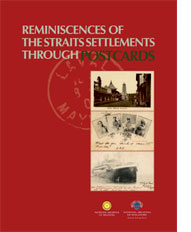
Reminiscences of the Straits Settlements through Postcards
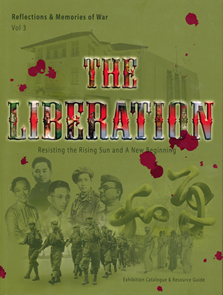
Reflections & Memories of War Volume 3: The Liberation - Resisting the Rising Sun and A New Beginning
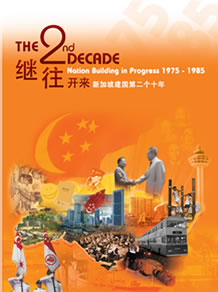
The 2nd Decade - Nation Building in Progress, 1975-1985 (继往开来 - 新加坡建国的第二个十年: 1975 - 1985)
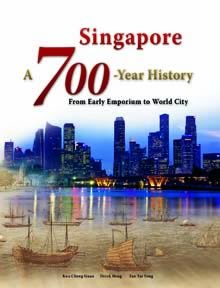
Singapore: A 700-Year History
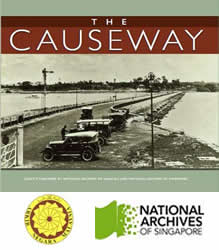
The Causeway
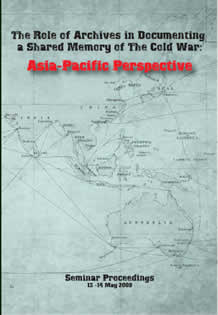
The Role of Archives in Documenting a Shared Memory of The Cold War: Asia-Pacific Perspective

10 Years That Shaped A Nation
Published by: National Archives of Singapore (NAS)
10 men. 10 years. They represent a crucial period where critical decisions and actions were made that helped shape the destiny of Singapore to this day. This catalogue complements and documents the travelling exhibition of the same title, which was launched on 28 July 2007, and records the many poignant stories on the contributions by the First Cabinet and Singapore's first decade of nation building. The catalogue is organised thematically into 5 parts - starting with a brief historical overview on key political milestones followed by four broad themes covering foreign relations and defence, economic development, public health and social harmony. Box stories such as on Constitution of Singapore, State Symbols, Water Supply, Family Planning Policy and Proclamation of Singapore give added interest. The lessons from these 10 years will inspire us in years to come and better appreciate where Singapore stands today.
Catalogue is in English and Chinese language.

Exhibition Catalogue on Syonan Years: Singapore Under Japanese Rule 1942 - 1945 (Chinese Edition)
Published by: National Archives of Singapore (NAS)
Commonly associated with bloodshed, torture and hardship, the Japanese Occupation is no doubt the darkest period in Singapore's modern history. Lesser known to many, however, the Occupation was not always all gloom and despair as people found moments of relief through various forms of entertainment and the celebration of festivals and weddings. Amidst the agony of going hungry and fear for the Kempeitai, glimpses of people's hope and their fighting spirit to survive also shone through on many occasions.
The National Archives of Singapore, with its extensive collection of oral history interviews and historical photographs acquired over the years, has put together an exhibition - Syonan Years: Singapore Under Japanese Rule (1942 - 1945), at the old Ford Factory, now known as Memories at Old Ford Factory, telling the story of what daily life was like during the Occupation. Anchored primarily on oral history accounts that were collected since 1980s, the exhibition depicts the changes and their impact of the Occupation on daily life, and people's reactions to them. Now, these stories accompanied by historical photographs and images from the exhibition are made available in a Chinese edition of the Exhibition Catalogue. Look back at these stories and discover the many lessons behind them. Learn about the creativity, entrepreneurship and perseverance displayed by people then as they found ways and means to adapt and survive despite harsh conditions.

Memories & Reflections: Documenting a Nation's History through Oral History - The Singapore Experience
Published by: National Archives of Singapore (NAS)
"Memories and Reflections" is a comprehensive step-by-step guide on conducting oral history. Researched and written by the alumni and current staff of the Oral History Centre, the manual takes the reader through preparation for the interview, the recording process and goes 'behind the scene', to show how the recorded information is processed and preserved.
The unique feature of the 2007 edition is the inclusion of many oral history extracts to illustrate the various aspects of oral history methodology including the 'do's and 'don'ts' of interviewing, and how oral history dissemination is done via the various media.
This manual provides a quick reference for new comers to the field of oral history. For oral history practitioners, this publication will be a useful resource guide on areas concerning project management, collection documentation and preservation.

Milestones of the China-Singapore Connection: Friendship and Cooperation, Growing from Strength to Strength, 1965-2010 (新中建交重要里程碑—加强友谊、深化合作、携手并进、共创美好,1965-2010)
This publication highlights major milestones in Singapore-China relations since 1965 and complements the exhibition that was jointly organised by the National Archives of Singapore and State Archives Administration of China in 2010 to mark the 20th anniversary of diplomatic ties between the two countries. Tracing the growing and multi-faceted ties between Singapore and China, this publication hopes to contribute to a better understanding of Singapore-China relations from a historical perspective.

Nanqiao Jigong: The Extraordinary Story of Nanyang Drivers and Mechanics Who Returned to China During the Sino-Japanese War (南侨机工:一批热血华侨回中国抗日的不平凡故事)
1939 - The Sino-Japanese War was at a critical stage. Most of China's port cities including Shanghai and Amoy had fallen into the hands of the invading Japanese forces. When Canton was captured in October 1938, China found its shipping routes almost completely cut off. Essential supplies that were badly needed at the war front were piling up in Hong Kong, a British colony then. China's last hope was the treacherous 1,146-kilometre Yunnan-Burma Road, which ran from Lashio town in Burma to Kunming city in Yunnan, China. Lacking experienced drivers and mechanics to keep this lifeline open, China looked towards Nanyang (Southeast Asia) for help. There, the overseas Chinese were already actively contributing to war efforts through massive donation drives and they also responded overwhelmingly to this call. Within days of the enlistment notice, some 2,300 volunteers came forward. Between February and August 1939, some 3,200 volunteers from various parts of Southeast Asia returned to China. One-third of them eventually died in the line of duty.
This publication complements the travelling exhibition, 'Nanqiao Jigong: The Extraordinary Story of Nanyang Drivers and Mechanics Who Returned to China During the Sino-Japanese War', which was jointly curated by the National Archives of Singapore, the State Archives Administration of China and the Yunnan Provincial Archives between 2008 and 2009. The Singapore leg of the exhibition was held in October 2009, following a preview in Yunnan in August 2009 and the launch of the exhibition in Beijing in September 2009. The exhibition subsequently travelled to Hainan in December 2009 and Kuala Lumpur, Malaysia in August 2010.
Catalogue is in English and Chinese language.

Power of Collective Memories and Evidence
Published by: National Archives of Singapore (NAS)
The publication is a compilation of the papers presented at the International Conference on Records and Archives, "Power of Collective Memories and Evidence", organised by NAS on 17 and 18 July 2008 in Singapore and cover the following topics:
- the interplay between the roles of records, archives, and the construction of individual and collective memories
- policy, procedures and infrastructure in developing a trusted record keeping system
- digital preservation strategies
- the latest policies, standards and practices in good record keeping and preservation from practising archivists.

Reflections & Memories of War Volume 1: Battle for Singapore - Fall of the Impregnable Fortress
Reflections & Memories of War, Volume 1: Battle for Singapore, Fall of the Impregnable Fortress, reveals remarkable insights from before the War through to the fall of Singapore, including an extensive coverage of Singapore's brave last stand, and the courageous story of the Malay Regiment's valiant resistance against the Japanese invaders at Bukit Chandu or Opium Hill. The battle for Singapore in World War II began when the Japanese Imperial Army invaded Malaya in December 1941. Discover history as the story is unveiled in this book through vivid personal accounts, photographs, documents, oral history and images.

Reflections & Memories of War Vol. 2: Syonan Years (1942 - 1945)
Published by: National Archives of Singapore (NAS)
The Japanese Occupation forms an important chapter in the history of modern Singapore, as locals found themselves subject to the brutalities of war and the powers of a new military administration. Today, the memories and reflections of those who lived through these dark war years have been captured at exhibition galleries in Memories at Old Ford Factory, the site of the former Ford Motor Factory where the British surrendered to the Japanese on 15 February 1942.
NAS is producing Reflections & Memories of War in 2 volumes. Together they serve as a catalogue and resource guide that complements and supplements the galleries with intriguing oral history accounts and a fascinating array of documents and images extracted from Japanese magazines and newspapers published in Singapore during the Occupation years.
We are pleased to launch Volume 2 first which begins with the fall of Singapore on 15 February 1942 and which focuses on daily life during the 44 months of Japanese rule. The realism of the stories and accompanying visuals will open your eyes to life under the Japanese rule and convey valuable lessons of resilience, hope, creativity and adaptability.
Look out for Volume 1, which traces Japan's rise to power in the 1930s, defence of Singapore during the Malayan Campaign, resistance efforts by the locals before and during the Occupation to recover Singapore, as well as the subsequent surrender of Japan and the aftermath of war. Together, these two volumes offer a detailed and compelling documentation of WWII archival records while providing a rich resource for teachers and students and an engaging reference for history enthusiasts.

Reflections & Memories of War Volume 3: The Liberation - Resisting the Rising Sun and A New Beginning
Reflections & Memories of War Volume 3: The Liberation - Resisting the Rising Sun and A New Beginning marks the 70th anniversary of the Fall of Singapore and covers the development of the Indian National Army under the Japanese Military Administration in Singapore, the resistance to Japanese Occupation, the defeat of Japan in 1945, the restoration of British control of Singapore, war crime trials, the issue of the blood debt and how Singapore has strived to transmit the lessons of the Japanese Occupation to the younger generations.

Reminiscences of the Straits Settlements through Postcards
The images in this compilation were featured in the exhibition, Reminiscences of the Straits Settlements through Postcards, a collaboration between the National Archives of Malaysia and the National Archives of Singapore. More than 150 postcards take the reader back to life in Penang, Singapore and Malacca at the turn of the late 19th and early 20th centuries. The images are a fascinating record of a shared lifestyle and a good reminder of the close historical links between the two nations.
This beautiful hardcover edition is a must-have for history buffs and avid collectors of historical postcards.
Catalogue is in English and Chinese language.

Singapore: A 700-Year History
Published by: National Archives of Singapore (NAS)
A new book published by the National Archives argues that Singapore's history does not begin with the arrival of Stamford Raffles in 1819, but 500 years earlier with the arrival of Sri Tri Buana who decided, after sighting a lion on this island, to settle here. Singapore: A 700-Year History; From Early Emporium to World City is written by Kwa Chong Guan, Derek Heng and Tan Tai Yong in response to an invitation from the NAS. The book draws on, and responds to the collections of the NHB institution, in particular the National Archives, to propose a longer time period and spatial frame to interpret our past from a macro perspective, which also set the bearing for NAS' other thematic and more micro presentations of history, such as "Reminiscences Of The Straits Settlements Through Postcards", "Reflections & Memories of War", "From Emporium to Singapore City: Mapping the Journey" and "Ten Years That Shaped A Nation: 1965-1975".
Our history has hitherto been perceived as a "Road to Nationhood" or a "Journey to Nationhood." The former was the title of the first exhibition on Singapore's history organised by the Archives & Oral History Department in 1984, while the latter was the subtitle of a book published by the National Heritage Board in 1998 under the coordination of the Archives. Singapore: A 700-Year History questions this framing of our past as moving along a road or on a journey towards a destination: Nationhood. The starting point of this new book is Singapore's aspiration to Global or World City. Where are the beginnings of Singapore's aspirations to becoming a global or world city?
The book attempts to locate our aspirations to world city status in the long cycles of the maritime history of the Melaka Straits as the link between the South China Sea and the Indian Ocean. It situates our current concerns about our status as a World City in the current post-Cold War cycle of globalization in the longer cycles of earlier globalization. The Fort Canning excavation project, and several subsequent excavations conducted by Dr John Miksic, with the support of the National Parks Board and the NHB have recovered indisputable evidence of a thriving emporium on and around the environs, particularly along the banks of the Singapore River. The archaeological evidence corroborates the Malay Annals' claim that Singapura from 1299/1300 to 1396 was a "great city", it links to later cycle of globalization of trade driven by the Yuan Dynasty in China and continued by the founder of the Ming Dynasty, when China became a consumer society, creating a market for all kinds of luxury items from the South Seas. Singapura emerged as a major supplier of products such as lakawood and hornbill casques to the Chinese market and received in return large amounts of porcelains, the shards of which we have recovered on and around Fort Canning, and the Riau islands, Singapura's hinterland.
The period from the abandonment of Singapura in 1396 to the arrival of Raffles has often been interpreted as a "Black Hole" during which nothing happened. The "great city" of the Malay Annals became a "sleepy fishing village." Singapore: A 700-Year History challenges this by building on the seminal insight of Dr Carl Alexander Gibson-Hill, the last British expatriate Director of the old Raffles Museum from 1957 until his untimely death in 1963, that Singapore's past is about the sea-lanes and straits for sailing past Singapore, and the contest and conflict for control of these sea lanes and straits. In a perceptive, but underappreciated paper first published in 1954 and then expanded into a Raffles Museum Monograph, Gibson-Hill argued that the sea-lanes and straits past Singapore came into use only from the mid-14th century. Prior to that the shipping and trading routes went south to the dominant emporium of Srivijaya at Palembang and only after the decline of Srivijaya did sailors and trades seek out the passages past Singapore. Gibson-Hill unfortunately did not have access to the Dutch or Portuguese archives in the 1950's. Ian McGregor at the old University of Malaya Dept of History was only starting to work on the Portuguese sources in the early 1950's before his premature death. Today, through the research of Peter Borschberg at the National University of Singapore History Department we are delving more deeply and extensively into the Dutch, Portuguese and Spanish archives. Borschberg was drawn to work on this "black hole" of Singapore history through his work on the Dutch jurist Hugo Grotius, who was engaged by the Dutch East India Company to defend them against Portuguese charges of piracy on their ships in Singapore waters. Through these recently retrieved Dutch and Portuguese documents which our National Archives is slowly acquiring copies of, we are now realizing the dept and intensity of Luso-Dutch rivalry that was played out in the waters around Singapore as part of a wider competition for global power status between a rising Holland and status-quo power Portugal and Spain in the last decades of the 16th and early decades of the 17th century. Our history would have been fundamentally different if either had the funding to construct any of the forts they planned.
In contrast to the pre-1819 era, the period after 1819 is well documented in the records of the Straits Settlements preserved in our National Archives and copies of the subsequent Colonial Office Records also in our National Archives. These records have hitherto been read as a documentation of the achievements of great colonial administrators and pioneering traders in building up Singapore as a thriving British port-city. This new book on Singapore history attempts to locate this story of great men making Singapore in to a wider framework of a rising British Empire underpinning a cycle of globalised trade which created the modern world we have inherited. Likewise, the post-World War II struggle for independence and Merger to form Malaysia, from which we were separated in 1965 has been often told and consolidated in a multi-million dollar exhibition "The Singapore Story: Overcoming the Odds" coordinated by the NHB in July 1998. The book's response to this telling of the Singapore Story is to locate it within the story of decolonization and the Cold War, necessitating the formation of a "Grand Design" for the transfer of power which would ensure the continuity of British's interest in the region and provide for the Commonwealth.
The underlying argument of Singapore: A 700-Year History is that the Singapore of today is very much the same as what it has been throughout its 700-year history: a port of trade performing much the same functions as it did in the 19th century or earlier, as a pre-modern emporium. And the problems and challenges confronting us today may not be that different confronting the settlers and residents of those early ports of trade.

The 2nd Decade - Nation Building in Progress, 1975-1985 (继往开来 - 新加坡建国的第二个十年: 1975 - 1985)
Published by: National Archives of Singapore (NAS)
In 1975, Singapore arrived at an enviable position after enjoying peace and rapid economic growth during its first decade of independence. Much had been done to put in place policies, systems and infrastructure to propel this new country from a time of uncertainty to a period of self-assured sovereignty. Yet fresh challenges abound for then Prime Minister Lee Kuan Yew and his cabinet, as Singapore braced itself for another decade of nation building.
As with its precursor, '10 Years That Shaped A Nation', 'The 2nd Decade - Nation Building In Progress, 1975-1985' is organised into thematic sections (defence/internal security, foreign relations, economy, health & the environment, housing, sports & culture and education) chronicling the challenges and triumphs of the years between 1975 and 1985, which presented both obstacles and opportunities for a young and evolving nation.

The Causeway
The Causeway - a 188-page book that showcases and celebrates the close social, economic and political ties between Singapore and Malaysia through the history of the Causeway.
Containing close to 240 images comprising photographs, maps, archival documents and news paper articles, the book is the first such historical book which tells the human story behind the building of the Causeway and the people who use it. This demonstrates the Causeway's role as a people connector between Singapore and Malaysia.
This book is jointly produced by the national archives of Malaysia and Singapore. The two archives took pains to select the best materials to tell the story of the Causeway in an engaging manner that will resonate with the public. The Causeway is not merely a conduit for the movement of goods and people, but a symbol that is close to many people's hearts and reflects the strong bonds between the two nations.

The Role of Archives in Documenting a Shared Memory of The Cold War: Asia-Pacific Perspective
In May 2009, the National Archives of Singapore (NAS) and S. Rajaratnam School of International Studies (RSIS) jointly organised a seminar on "The Role of Archives in Documenting a Shared Memory of The Cold War: Asia-Pacific Perspective".
The seminar coincided with the Board Meeting of the Southeast Asian Regional Branch of the International Council of Archives (SARBICA) for which NAS is the current chair. Bringing together national archivists and historians from various institutions all over the Asia-Pacific, it was a breakthrough in exploring the role of regional archives in documenting their shared memory of the Cold War from an Asia-Pacific perspective.
The fresh insights arising from the seminar of the respective archives' holdings and latest developments in historical scholarship on the Cold War in the Asia-Pacific are captured in the publication. How to organise and develop an international multi-archival collaborative effort to expand the range of unique records on the Cold War available for public research is also explored.

Memories Unfolded: A Guide to Memories at Old Ford Factory
Published by: National Archives of Singapore (NAS)
The old Ford Motor Factory opened its doors once again on 16 February 2006, to a new lease of life as Memories at Old Ford Factory ("Memories"). Now a national monument befitting of its name, Memories houses our nation's collective memories in its archives repositories, while also capturing the personal memories of a people caught under the Japanese Occupation in a permanent exhibition - "Syonan Years: Singapore Under Japanese Rule, 1942 - 1945".
This guide to Memories at Old Ford Factory reveals behind-the-scenes stories of the building's beginnings, its significance leading to the start of the Japanese Occupation in Singapore, to its transformation from a car assembly plant to the present day exhibition gallery, audio-visual theatre and archives repositories. Along the way, as research for the exhibition content revealed a nation's resilience in times of war and scarcity, see how important lessons learnt from history on resource management, adaptability, self-sufficiency and innovativeness were incorporated in the building's design and daily operations.
Look out for key Japanese Occupation artefacts displayed in the gallery and learn the significance of various features incorporated into the landscaping at Memories. Also make use of our recommended itinerary to explore Memories thoroughly for a unique, comprehensive and interactive approach to understanding the darkest years of Singapore's history.